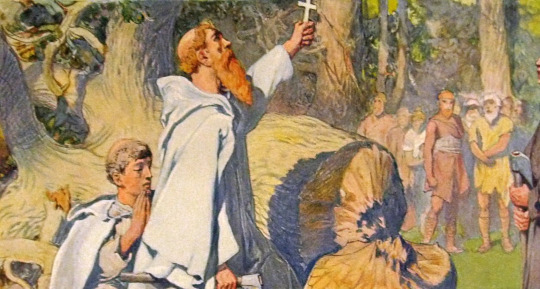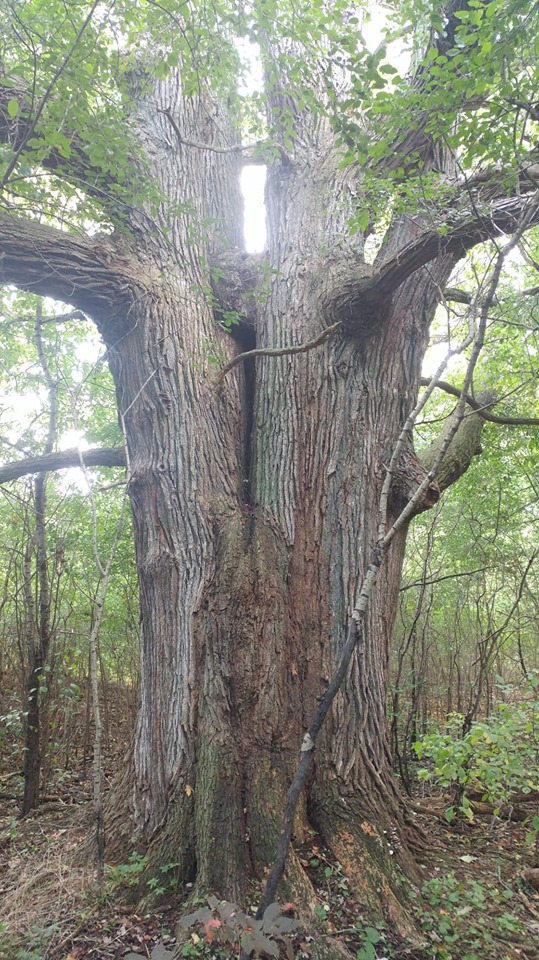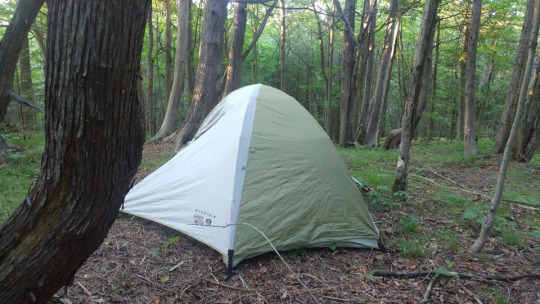A Forest Science student's thoughts about forests, trees, and humans
Don't wanna be here? Send us removal request.
Text
Worshipping the Woods - The Destruction of Pagan, Celtic, and Native American Forest Legacies

Lately I’ve been obsessed with learning the history of the once massive forests and huge trees that covered North America. When Europeans first colonized/invaded America in the 1600s they were completely blown away by the size of the trees they found. There was nothing like that in Europe. They would write letters home, in shock and in awe of the size of trees.
In Europe mass deforestation had been been happening for centuries. The Celtic and Pagan traditions that saw trees as conscious, living beings, had practically vanished as Rome and Christendom saw these traditions as witchcraft and satanism. Pagans in Germany were hunted and killed for their woodland ceremonies. Celtics in Ireland watched their dense forest almost completely vanish from their island as the British turned into farmland to support their feudalism goals.
For Pagans and Celts, the forests were their temples, places of magic and beauty. Trees that would give structure for their homes, food for their bellies, cures for their diseases, and the ultimate aesthetic spiritual experiences. But to Christendom and the growing power of capitalism, forests could not be trusted. They were dark and evil. They stood in the way of progress.
A story in particular that has stood out me - and inspired this blog of the same name - is the story of Donar’s Oak. Winfrith Boniface, better known as “Saint” Boniface, was sent in the 8th century by the pope to convert the large pagan communities that still existed in Germany. Seeking to, as he explained, show pagans their was no spiritual power in nature, Boniface decided to cut down a oak of incredibly massive size. This oak was worshipped by the pagans as Donar’s Oak (Thor’s Oak).
Boniface, surrounded and protect by soldiers, chopped down the the tree as pagans watched and cursed his name. He then, after the pagans watched in shock as the tree fell, proceeded to add insult to injury, and began building a Christian Church from the wood of this tree. Wow. Not only did he kill their god, but he built a monument to his god, from the bones of their god.
History tends to repeat itself and a similar scene occurred a thousand years later and six thousand miles away.
--
John Galt, a British-Scottish explorer, colonizer, and a key figure in the British invasion of what soon became Ontario, Canada, was staring up at the most massive tree he had ever seen. Walking through an “uncleared portion of the primeval forest” somewhere in what is now Hamilton in the 1820s, Galt had come across an oak tree so big he praised it as the “Goliath of oaks” and “the greatest known.”
I had a similar feeling to what Galt had about a year ago. I was walking through what remains of undisturbed forest in Guelph, Ontario (A city Galt founded), and I stumbled upon a massive oak. Tiny by historical standards, probably a quarter of the size of tree Galt saw, but massive in comparison to what I was used to. Like Galt described the Oak he found, it dwarfed the other trees around it and made it seemed like it ruled over them, as the “monarch of the woods”.

Galt however also had a very Boniface-like reaction mixed in with his awe. He immediately fantasized about “cutting it down, and sending home planks of it to Windsor Castle”.
What?
To stumble upon something that amazing and immediately think about destroying it....
Like Boniface saw Donar’s Oak as standing in the way of progress and built a church out of it, Galt saw this massive Ontario Oak as something to be felled, sent across the ocean to Britain, and turned into fancy furniture. Boniface and his Christian God. Galt and the British Empire. No patience or time for something that took a thousand years to grow.
As Boniface stole something important from pagans, Galt was there to steal the forests from Native Americans.
--
I recently visited Huron Natural Area in Kitchener, Ontario. When I hike around Ontario, I’m so used to seeing forests dominated by invasive species that lack anything nearing old growth or diversity. However sometimes you find these incredible stretches of old forests. Areas that have never been cleared for homes or farmland or golf courses. They don’t have the massive trees they would have had centuries ago (these likely were selectively logged or died from new diseases and threats brought by the Europeans), but they have their descendants. Huron Natural Area was one of those old forests. It was incredible. The friend I was hiking with commented ‘how we were going to be here all day’ because I couldn’t stop examining every single tree.
Something I especially loved though, was the information on the signs (designed by @EmilyDamstra) at the entrance. These let you know that the Huron Natural Area wasn’t really a “natural” environment, in the sense that we think of “natural“ as being undisturbed. This incredible forest had been the home to multiple Native American groups over thousands of years. Groups that had grown with the forest, used it, shaped it, and most importantly, sustained it.

There is an old lie about Native Americans that we can’t seem to dismiss. The lie that America was mostly empty when the Europeans came. That America was full of forests that were untouched by human hands. These are the “truths” taught to us in school that we can’t seem to dismiss despite the growing evidence. The evidence that the population of Native Americans rivaled that of Europe at the time of first contact. The evidence that Native Americans didn’t so much “live in the wild”, as designed and cared for it. (Highly recommend the book 1491 by Charles C. Mann to help kick these misunderstandings).
That Oak tree Galt wanted so badly to cut down, was likely a tree Native Americans groups in the area were well aware of. They probably made use of the acorns, the bark, and the twigs. Hell, its possible they even planted it. Lots of Native Americans planted and grew oak trees and other nut trees for food. They maintained Oak Savannas, which look much like European parks with grass and spaced shade trees, which allowed the tree branches to spread low so acorns can be picked. It shocked European settlers who came upon them because they appeared to be so obviously human maintained, which in their eyes couldn’t be possible for these savage Indians.
--
Currently I am reading an autobiography by Diana Beresford-Kroeger, an Irish botanist now living in Canada, who was raised as a child with old Celtic traditions and knowledge about nature. In it she talks about her anger at discovering that the great Irish forests, where this Celtic knowledge was created and passed down by ancestors, were no more due to the invasion of Christianity and the British. She also talks about her wonder and thanks for the Native American people of Canada for maintaining the Canadian Forests. For not letting Canada turn into a forest-less county like Ireland.A theme throughout is her concern for the future as forests are still vanishing.
It saddens me, learning about these massive forests that I’ll never get to see. But like Beresford-Kroeger, I am in awe of the forests we still have in Canada and thankful for them.
Just a few nights ago, I decided to do something I hadn’t done in a long time. I went camping all by myself. I packed my tent, sleeping bag, and some food and walked about 5 hours north from my place in Guelph. Just as the sun was beginning to go down, I found an incredible old forest between two farms. Much like the forest of the Huron Natural area, it was area that had been sustained and allowed to grow old. There were some incredible trees, like the Blue Beach, the muscle-wood tree, that can only be found in older forests like this. I claimed a spot on the top of a hill where i would get lots of light and wouldn’t have to worry about rain. As I sat watching the sun peak through the trees as darkness fell on the wood, I noticed I had camped near a large oak, that would protect me that night.

2 notes
·
View notes